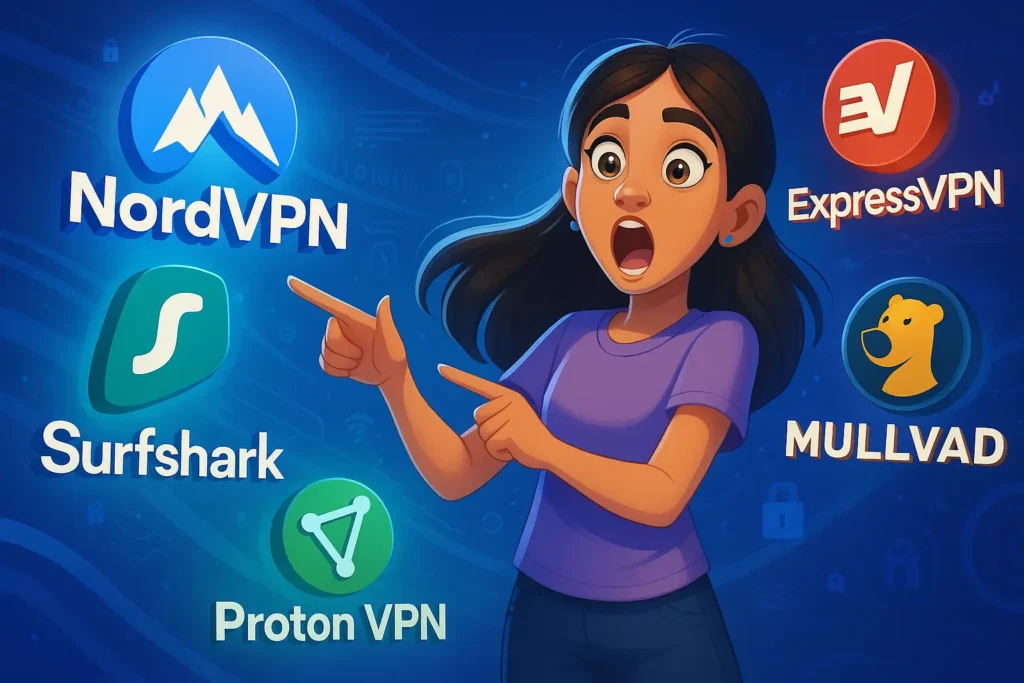Every tech enthusiast has a passion for innovation, especially in backend development. With 2025 just around the corner, developers eagerly look forward to the opportunities that backend projects offer. This area of technology goes beyond coding; it involves creativity, problem-solving, and a commitment to efficiency and scalability.
This article provides a curated list of innovative backend project ideas to spark your imagination and guide you through different levels of expertise, from beginner to advanced, across various industries. Whether you want to create a simple blogging platform or explore the complexities of a blockchain application, there’s something here for everyone. Let’s start this journey to redefine backend development for the future.

Key Considerations for Backend Projects
Choosing the right backend project is essential for building skills and showcasing your abilities as a backend developer. Beginners should start with simpler projects like a personal blog, which introduces the fundamental concepts of backend frameworks and server-side development. This type of project is a great way to practice and grasp the basics.
When selecting a project, look for one that includes RESTful API and database management. These elements are crucial because they teach you how to work with API-based applications. Understanding these areas improves your backend development knowledge and prepares you for more complex tasks.
Typically, beginner-level backend projects take around 25 hours to complete. This timeframe allows for learning and skill development without feeling overwhelming.
Here are some project ideas to consider:
- Blogging Website
- Weather API
- Expense Tracker
- Real-time Chat Application
- Order Tracking System
Taking on these projects will enhance your knowledge of user authentication, security practices, and database structures, making you more appealing to potential employers. In summary, choosing the right project can greatly influence your backend development journey and job prospects.
Beginner Backend Projects
Beginner backend projects are a fantastic way to improve problem-solving skills and build a strong professional portfolio. Engaging in these projects gives new developers the hands-on experience needed to navigate various codebases and frameworks. These projects often use platforms like Node.js, Django, Express.js, Laravel, ASP.NET, Flask, and Ruby on Rails for backend development.
Blogging Platform: Content Management Simplified
Creating a personal blogging platform is an excellent backend project that allows you to showcase skills in various frameworks and coding practices. Developers gain experience in creating RESTful APIs and handling CRUD operations, which are fundamental for modern web applications.
Handling real-time data and data modeling enhances the project’s impact by demonstrating your ability to manage dynamic content. Adding user authentication and managing user sessions are key skills that introduce security elements similar to real-world applications. Overall, this project enhances your backend portfolio by showcasing your competence in complex queries, data transactions, and user management functionalities.
Next Step: Don’t waste your time and start the project today! Complete Steps!
Sports Statistics App: Data-Driven Insights

A Sports Statistics App project is designed to track and display information about sports teams and players. It focuses on MongoDB as a database solution for storing and manipulating data, honing beginners’ skills in managing diverse datasets. From player statistics to team records and match outcomes, developers will deepen their understanding of backend infrastructures unique to sports-related data.
Although this app is considered easy in complexity, it offers valuable experience in dataset handling with a manageable learning curve of about 20 hours. Completing this project significantly sharpens foundational backend skills.
Nest Step: Start this project today and build your profile strong in diverse topic!
Task Management System: Organize and Streamline
A Task Management System project involves creating a backend structure to manage tasks and projects efficiently. This application allows users to create tasks, assign them to team members, set deadlines, and track progress.
Utilizing Java, an Embedded Tomcat 9 server, MySQL Database, Node Package Manager (NPM), and Maven, this project helps you understand a solid technical infrastructure. Adding user authentication boosts security within the system, which is crucial for any team-based management tool. This project is ideal for beginners with no prior experience, serving as a gateway into programming essentials and backend development.
Simple API Service: Introduction to APIs
Building a Simple API Service is a great way to learn about APIs, which are the backbone of many web applications. These services manage and communicate data in JSON format, using REST APIs for smoother data operations.
Through this project, beginners become familiar with programming languages like Python, Java, or Node.js, which are often used for creating secure systems. Tools like Postman help ensure the APIs return the correct data and function as intended. This project is also a strong starting point for learning about CRUD operations and data storage, making it an excellent choice for newcomers to backend development.
Personal Portfolio Website: Showcase Your Skills
A Personal Portfolio Website is not just a project; it’s a vital tool for showcasing your backend development skills. It provides a platform to highlight various projects, bridging the gap between coding abilities and job readiness. By focusing on backend elements, this project demonstrates proficiency in languages and frameworks like Python, PHP, or Node.js.
Integrating user authentication systems adds real-world relevance since many modern websites rely on these for security. A well-crafted portfolio site shows a solid understanding of key development concepts, making a compelling case to potential employers while marking your journey into the tech industry.
Next Step: Start building a Personal Portfolio Website in just 5 Simple Steps – Here’s How!
Intermediate backend Projects
Taking on intermediate backend projects is an excellent way to elevate your skills. These projects connect basic applications with more complex systems, giving you the chance to tackle varied challenges. By working on projects like chat applications, social media platforms, and e-commerce sites, you’ll gain valuable experience in database management, API use, and real-time data processing. Each project provides unique insights, helping you become a versatile and skilled backend developer.
Chat Application: Real-Time Communication
Creating a chat application offers hands-on experience with real-time communication systems. This project usually takes about 35 hours to complete and introduces you to the complexities of handling real-time data flow, a crucial skill in backend development. Key technologies include Socket.io for managing real-time data and MongoDB for storing essential information like messages, user profiles, and room details.
The task complexity is medium, making it perfect for those familiar with a backend framework and basic MongoDB operations. By engaging in this project, you’ll improve your skills in CRUD operations, enhance database interactions, and learn about the seamless data exchange needed for chat applications.
Social Media Platform: Community Building
Developing a social media platform delves into scalability and interactivity in backend development. This project challenges you to implement essential features like user profiles, messaging, likes, and comments, all facilitated through robust APIs. A technical stack that includes React, Node, and Express ensures smooth communication between the front-end and back-end.
Managing a large user base and varied interactions demands efficient database management, making PostgreSQL an ideal choice. More experienced developers might consider using Go as a backend programming language to boost functionality. This project broadens your technical skills while highlighting your ability to create platforms that build community connections.
E-commerce Application: Online Shopping Experience

Working on an e-commerce application involves creating a backend system that supports product listings, user accounts, orders, and payment processing. MongoDB plays a key role in storing product data and efficiently managing transaction records. This complex project is an excellent opportunity to develop skills in handling transactions, executing CRUD operations, and carrying out complex database queries.
Incorporating features like admin user dashboards and a product cart increases its usefulness. Showcasing such a project in your portfolio emphasizes your competence in advanced backend technologies, impressing potential employers by demonstrating your ability to enhance online shopping experiences.
Event Booking System: Seamless Arrangements
An event booking system project focuses on making reservation management simple and user-friendly. While specific details are limited, a typical project would involve creating a backend that efficiently handles bookings, schedules, and resource availability. Integrating secure payment gateways and giving users a clear interface for managing their appointments would be key tasks.
Developers might use frameworks like Node.js or Spring Boot along with a relational database like PostgreSQL or a NoSQL database for flexibility. This project sharpens your skills in managing complex queries, ensuring secure transactions, and providing a smooth user experience.
Geographic Information System: Mapping Data
Creating a Geographic Information System (GIS) involves mapping and analyzing spatial data, which is essential for applications ranging from urban planning to resource management. While specific details were not provided, a GIS project typically requires processing geographical data and producing visual representations on maps.
Using server-side technologies like Python or Ruby combined with backend frameworks such as Flask or Ruby on Rails is advisable. Databases like PostgreSQL with PostGIS extensions efficiently manage geographic data. This project is perfect for those interested in spatial analytics, allowing you to apply backend skills to real-world geographical issues.
Advanced Backend Projects
Advanced backend projects, like building a finance application or social media platform using programming languages such as Go, help refine your skills by working with various technical stacks. They often require integrating multiple frameworks and databases, such as using SQL databases like PostgreSQL, to navigate complex data management tasks effectively.
Content Delivery Network Service: Efficient Media Distribution
A Content Delivery Network (CDN) service illustrates efficiency in media distribution by spreading content across different servers. This distribution is important for optimizing delivery times and incorporating load-balancing techniques for enhanced performance. Implementing a caching system within a CDN minimizes latency and enables quick content retrieval.
Effective routing ensures web content is delivered quickly across different geographical locations, boosting the system’s reliability. Using a CDN improves speed and builds trust in an application’s ability to provide content effortlessly.
Stock Trading Application: Real-Time Market Analysis
Developing the backend of a stock trading application requires a sophisticated approach to real-time market analysis. Essential features include managing user portfolios, executing orders, and tracking transaction histories. Integrating real-time stock data is crucial for a top-tier experience. Additionally, security and scalability are vital for supporting a growing user base in a fast-paced trading environment.
Languages like Java, JavaScript, and HTML, along with tools like Docker, are important for building a robust and efficient stock trading system. By focusing on these components, developers can create a platform capable of handling high real-time demands smoothly.
Music Streaming Platform: Audio Management

While specific background details were not provided for a music streaming platform, such applications typically revolve around efficiently managing audio content. Backend developers need to create systems for music categorization, user playlists, and real-time streaming. Ensuring a smooth user experience often requires a solid grasp of media compression techniques and effective use of backend frameworks. Incorporating user-generated data for personalized experiences could further enhance engagement on these platforms.
Machine Learning Integration: Predictive Systems
Integrating machine learning into backend systems opens up new possibilities for predictive analytics and automated decision-making. This involves using data modeling and querying skills to process data effectively. By using machine learning libraries and tools, developers can build systems that predict trends or outcomes based on historical data analysis. A strong backend plays a key role in supporting these algorithms, allowing for smooth data integration through APIs and effective storage solutions. Good security practices are vital to protect sensitive predictive information, which helps maintain user trust and data integrity.
Industry Specific Backend Projects
Blockchain technology provides a fresh approach to improving security and transparency in backend applications. By decentralizing data storage, it lessens the dependence on a central authority, ensuring better security through its distributed nature. Transparency is achieved with a publicly accessible ledger that records transactions immutably. Developers working with blockchain need to have a solid understanding of distributed systems and consensus mechanisms to create backend solutions that are secure and transparent.
Healthcare Management System: Enhancing Patient Care
Creating industry-specific backend projects showcases a developer’s specialized skills and expertise in various fields. These projects go beyond coding; they reflect an understanding of the unique challenges and needs of different industries.
From managing financial transactions in fintech to incorporating IoT capabilities in smart homes, these projects demonstrate a developer’s ability to tailor backend solutions to meet specific industry requirements. Backend development often involves handling complex data and ensuring high-security standards, making these projects practical evidence of a developer’s skill in delivering effective server-side solutions.
Fintech Solutions: Financial Innovation

In healthcare, backend developers are essential for creating systems that improve patient care. These projects require a strong grasp of data exchange and the need for secure, reliable access to patient information. By developing healthcare management systems, developers can show their ability to create solutions that enhance patient data management, scheduling, and even telemedicine services.
Key features might include robust user authentication and smooth integration with various healthcare APIs, ensuring patient information is accessible and secure, ultimately improving the healthcare experience.
Smart Home Integration: IoT Capabilities
In the fast-changing world of fintech, backend developers play a key role in transforming financial interactions. Projects in this area could involve building secure systems for monetary transactions or developing stock trading applications. These projects highlight a developer’s ability to implement RESTful APIs and manage sensitive data with strong security practices.
By demonstrating a good understanding of backend frameworks and complex data structures, developers can significantly influence innovation in financial services, bringing new levels of efficiency and security to financial transactions and management.
Educational Platform: Online Learning Engagement
With the growth of IoT, smart home integration projects are becoming more popular among backend developers. These projects show a developer’s ability to manage data exchange between multiple connected devices. For successful smart home integration, developers need skills in connecting and managing various IoT devices through a strong backend architecture. This can involve creating APIs that allow different devices to communicate smoothly and ensuring user data is secure. Such projects highlight a developer’s skill in connecting physical devices to digital interfaces, making everyday home environments smarter and more interactive.
Logistics and Supply Chain Systems: Optimize Operations
Backend projects in education can significantly enhance online learning engagement. By using effective backend frameworks like Django or Node.js, developers can create robust educational platforms that handle large amounts of user data and content. These projects include building databases capable of storing extensive educational resources and user interactions. Backend development makes these platforms scalable and secure, which is crucial for maintaining user trust and engagement. Developers can showcase their expertise by integrating real-time interactions and personalized learning modules for a more engaging online learning experience.
Emerging Technologies in Backend Development
Even though it wasn’t detailed earlier, developing backend projects for logistics and supply chain management is an excellent way to show skill in optimizing operational workflows. These systems manage large quantities of goods and materials as they move through production and distribution. Effective backend projects can streamline inventory management, improve order tracking, and enhance communication throughout the supply chain. By focusing on these areas, developers can demonstrate their ability to build efficient, scalable solutions that directly impact the operational success of businesses in various industries.
How to Effectively Incorporate AI in Backend Projects
In the ever-changing field of backend development, new technologies continue to create opportunities. Integrating caching systems improves web content performance by reducing latency, which is essential for user satisfaction. Efficient routing further helps by making sure data is quickly and accurately sent to users.
Building a stock trading platform backend requires integrating real-time stock data, which is complex but rewarding. It also involves implementing user portfolio management, giving developers hands-on experience in creating dynamic financial services.
For beginners, starting with projects like sports statistics apps or blogging platforms can provide a solid foundation. These projects offer practical experience in user authentication, database management, and RESTful API creation.
To become proficient in backend development, understanding coding basics, data structures, and database fundamentals is crucial.
Creating a strong developer portfolio relies on hands-on backend projects. These projects convincingly show a developer’s web development abilities and technical skills.
Key Areas in Backend Development:
- Efficient routing techniques
- Caching systems for reduced latency
- Stock data integration for financial services
- Foundational projects for beginners
By focusing on these areas, backend developers can keep pace with new technologies and improve their skills.
Building Scalable and Resilient Backend Systems
Building scalable and resilient backend systems is vital for successful backend development. Choosing the right backend framework, such as Spring Boot, supports scalability and improves enterprise solutions by providing strong and flexible structures. The effectiveness of these systems often depends on how well you understand the chosen framework and how it meets project needs.
Grasping core backend principles is essential. Beyond programming languages, backend developers must understand server-side development concepts, data structures, and security practices. This understanding is key for managing databases, such as using NoSQL, and optimizing RESTful API design for smooth integrations.
Community support is also a key factor. A strong ecosystem simplifies integration with databases, APIs, and other external services necessary for resilient systems. For example, Spring Boot has solid community support, making integration with cloud platforms and other systems easier.
Here’s a quick checklist for ensuring strong backend project setups:
- Choose a scalable and efficient framework (e.g., Spring Boot).
- Ensure a deep understanding of backend concepts.
- Utilize community-supported tools and integrations.
- Focus on creating APIs, managing databases, and server-side logic.
By mastering these areas, you can build solid projects and enhance your portfolio with valuable backend skills.


















